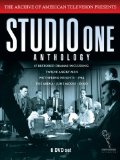| Reviews & Columns |
|
Reviews DVD TV on DVD Blu-ray 4K UHD International DVDs In Theaters Reviews by Studio Video Games Features Collector Series DVDs Easter Egg Database Interviews DVD Talk Radio Feature Articles Columns Anime Talk DVD Savant Horror DVDs The M.O.D. Squad Art House HD Talk Silent DVD
|
DVD Talk Forum |
|
|
| Resources |
|
DVD Price Search Customer Service #'s RCE Info Links |
|
Columns
|
|
|
Studio One Anthology
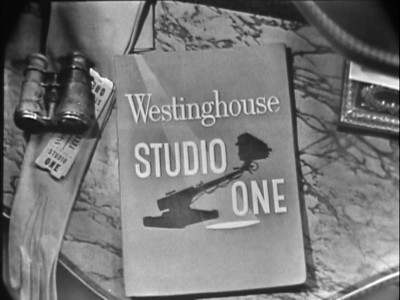
Not unlike what Hollywood did back when sound films were first introduced, when the new medium seemingly demanded actors and playwrights with a theatrical background, so too did early network TV cast about for actors, performers, directors, and writers whose roots in the legitimate theatre (as well as the so-called "lower" forms of stage theatrics, such as vaudeville) would help bring quality and "class" to the ever-expanding network TV schedules - along, of course, with the sporting events, westerns, and sitcoms that dominated the first few years of network programming. As the networks greatly increased the time they were broadcasting in the late 1940s and early 1950s, and as they encountered more and more criticism from journalists (almost all of them New York City-based) about the "intellectual wasteland" of television, the networks were able to kill two birds with one stone: get high-toned dramatics on the air to silence the critics, and air these plays and dramas live (before video tape) to save money and to fill all those big, empty prime-time scheduling slots. It didn't hurt that network TV production in those early days was centered almost exclusively in New York City, where the networks could tap a myriad number of performers and writers, many of them young and hungry for their first big break in show business. If established Broadway and Hollywood actors, directors, and writers spurned the new bastard medium television as a faddish, freakish novelty, all the better; the new talent was much cheaper, much more easily controlled, and the initially small audiences (many of them upper-middle class urban viewers who could actually afford the first expensive TV sets) didn't seem to care what was coming over these miraculous small little boxes of ghostly black and white shadows.
Studio One, a weekly dramatic anthology created by Fletcher Markle for CBS Radio in 1947, wasn't a runaway success (it lasted only one year), but once CBS committed to expanding their nascent television broadcasting, Studio One's format of a weekly adaptation of either an established classic or newly created play, was considered a natural for the new medium. Under the careful, tasteful guidance of seminal TV producer/writer/director Worthington Miner, Studio One became, along with higher-rated live dramatic anthologies such as Philco TV Playhouse, Kraft Television Theatre, and later, Playhouse 90, one of the best examples of a genre that would become a significant leg of 1950s network programming - a genre that proved popular with critics and viewers alike.
Anyone studying film and television history will come across a lot of books that describe this specific time period - the late 1940s to the mid-to-late 1950s - and this particular genre, the live dramatic anthology series, as the "flowering" of television's "golden age." That very well may be, although to be fair, it's almost impossible today to make such a statement, even for historians, when so much programming from that period is lost forever. Of course, prior to the invention and subsequent widespread use of video tape, kinescopes were utilized by the networks (16mm films of the live performances, taken off a studio monitor), mostly for the intended purpose of broadcasting a particular show later to the West Coast. But most live programming from this time period existed within its broadcast time frame, and disappeared into the ether, forever. What shows that managed to survive the ravages and vagaries of time represent only a small fraction of what network and eventually local stations broadcasted, so judging this time period as television's "golden age" may be nostalgic, wishful thinking on the part of those whose aesthetic outlook depends on this theory being true.
Aiding this widespread "golden age" theory is the fact that much of what was written about television at that time, by then-contemporary critics based in New York City, was oriented towards seeing live broadcast drama as the only "true" art that graced early network schedules, as opposed to the looked-down-upon "mass entertainment" fare such as sporting events, variety shows, and later, sitcoms. Those elitist critics, dismayed from the start by the commercial aspects of television (how dare they interrupt a program to sell soap?), felt at the very least appeased by the networks' efforts to counter the baggy-pants lowbrow humor of Uncle Milty with weekly appearances of adaptations of Shakespeare, Orwell, and the new, modern theatrics of newcomers like Rod Serling, Gore Vidal, and Reginald Rose. These urban critics, who valued attempts at staging classical dramas and exciting, new, modernist plays over the easy laughs and thrills of vaudeville-inspired variety shows and westerns, provided the historical basis for many historians to come who brought along the same aesthetic preferences as their sources. While many viewers (and a few critics) rightly considered the genuine geniuses such as Sid Caesar, Jackie Gleason, Red Skelton, Ernie Kovacs, and of course Lucille Ball the equals (if not superiors) to anything seen on Studio One, the hierarchal divides between "high and low-brow" art were still quite prevalent among print critics at this time. The New York Times reviewers, if they even watched or wrote about TV, may have admitted that they enjoyed Sid Caesar's Your Show of Shows, but Studio One was good for you, and for the culturally malnourished average American TV viewer.
Acknowledging this bias in both the original journalists of the day and in many of today's historians, in no way diminishes the impact and genuine artistry of live dramatic anthologies of this time period, though. Quite the contrary, when watching some of the examples gathered here on the Studio One anthology, it's easy to see that what was offered on a weekly basis over the broad network programming schedule, was quite extraordinary for its daring in blatantly trying to bring intellectual and cultural programming to the "average" viewer. Quite simply, almost none of the programs featured on this anthology would ever see the light of day on any of today's network schedules, and that's a shame. Regardless of the level of success these adaptations achieved is somewhat beside the point. Any artistic endeavor should be judged, ultimately, on its own inherent merits; just because a piece of work has "good intentions" doesn't therefore automatically make the piece a success (a point seemingly lost on a good number of contemporary critics today when judging socially conscious - but badly executed - films). But the sheer number of live dramatic anthologies that once proliferated on "The Big Three" during this time (one source on one of the extras provided on this set claims a high of fourteen hours of such programming during one particular season) indicates that something outside the norm was operating during this flowering of network TV, an occurrence that doesn't seem likely to ever repeat itself on today's locked-down-tight TV schedules.
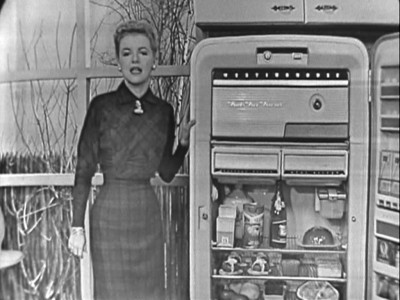
There's an undeniable level of excitement that permeates these kinescopes of the live performances that went out week after week from New York City, an excitement that will be familiar to those viewers who regularly attend staged plays and musical performances, but one that may seem, due to the crudity of the kinescope recordings, stiff and unyielding to viewers more comfortable with today's television programming. Anyone who's had any experience with stage shows (either performing in them, working on them, or simply watching them), will recognize the "go for broke" tension that comes through these recorded plays. These actors know they've one chance to get it right, or else fail spectacularly before millions of unseen viewers. While a stage actor can often gauge and adjust his or her performance by the interaction with the audience, these actors were confined to incredibly cramped, technically primitive TV studios, enacting their roles before ludicrously cheap sets (often just painted canvas in the beginning), while trying to dodge the huge cameras, cables and flying sets that were necessary to bring these plays off - and with no audience to play off. That's an incredible handicap that nonetheless brings a level of excitement to these performances that, regardless of the actual success of the entire production, goes a long way towards making these kinescopes come alive.
The technical aspects of these laboriously staged plays shouldn't be forgotten, either. Unlike today's world, where people can casually take brief videos from their palm-sized cell phones, the three or four video cameras that were needed to broadcast these plays were behemoths with four rotating lens, tethered to huge cables that snaked all over the studio floors, necessitating nightmarish blocking logistics that would task the average engineer, let alone a theatrical director trying to bring a sensitive, powerful drama to life for the viewer. Even more telling, Studio One at the time was noted for its facility for actually moving those cameras around, and "cutting" from camera to camera, creating film-like editing capabilities that one simply couldn't experience sitting in a stage theater. How these early directors, such as Paul Nickell and Franklin Schaffner (the two most represented directors in this Studio One DVD anthology) were able to not only navigate these stifling, 12-foot-high, 100-yards-long TV studios, while moving these incredibly cumbersome cameras around the cable-strewn floors without crashing into each other on a weekly basis, all the while creating credible dramas that "worked" for the audiences, is anybody's guess, but these efforts certainly mark a milestone in technological creativity within network TV's early history.
With that said, not all within this Studio One anthology is entirely "golden" and perfect. The very technical limitations cited above can often negatively impact the intended dramatic effect of the plays (the staging of the first offering on this set, the opera The Medium, is incredibly stilted and ultimately, grindingly tiresome), while at times, the intensity of the performances, particularly from the younger, more inexperienced performers, can come across as "stagey" in the worst sense of that word (contrary to probably quite a few, I found Sal Mineo's performance in Dino all too "Method-y"). And certainly, the plays themselves, and their adaptations, vary in quality, as well. While some are still viable today, even fifty-some-odd years later (both of Gore Vidal's efforts here are amazing; Pontius Pilate is like an oasis in the desert; Serling's The Strike is nicely spare and hard-edged; The Death and Life of Larry Benson is beautifully dreamy and strange and oft-putting), others date badly (the Yul Brynner-directed The Storm is ludicrous; The Remarkable Incident at Carson Corners and Dino are all too indicative of liberal feel-good 1950s socially relevant drama; Julius Caesar is too truncated and miscast, to boot). As Charlton Heston wisely intones in one interview snippet from one of the extras included on this set, live dramatic anthologies made up the bulk of what was called alternately "the golden age of television" and "the vast wasteland," with the truth probably somewhere in the middle.
Time is probably the biggest potential drawback for many of the plays presented here in the Studio One anthology. While it certainly is no drawback for a piece to be designed to fit within a certain running time, some of the plays presented here whither under the constraint (again, Julius Caesar). One of the "holy grails" of live network drama, the celebrated Reginald Rose play, Twelve Angry Men, is finally presented in what appears to be a complete kinescope (the kinescope found recently in a lawyer's personal effects). However, due to the saturation availability of the Sidney Lumet theatrical version of the play, this Bob Cummings-starring version suffers quite dramatically from the shorter running time that fails to not only to properly set up the various characters who will clash within the jury room, but that also fails to create a sufficient level of increasing tension necessary for the play to succeed. The restrictions of the hour-long format also tended to favor neatly tidied-up morality plays that had less room for ambiguous, in-depth examinations of complex issues and character motivations, and more room for easy polemics and soon-to-be-cliched 1950s social anxieties masquerading as meditations of moral ambiguities. Certainly anyone familiar with the social "message films" of the 1950s will feel right at home with quite a few of the offerings here in the Studio One anthology, a familiarity which today can feel at times, stagey, preachy, and facile.
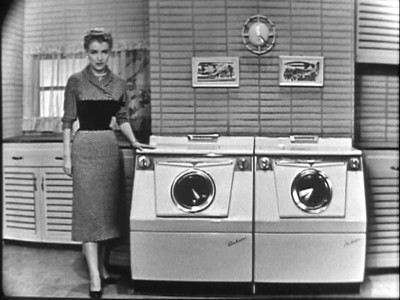
There's no way to accurately gauge the very earliest success of Studio One, as far as official ratings go (A.C. Nielsen, the "authorized" arbitrator of TV ratings, began compiling TV ratings in October, 1950 - almost two years after the premier of Studio One in November of 1948). According to some of the creative people involved with the show, Studio One was a sizeable hit during these first two years, which wouldn't be surprising considering the relatively low numbers of TV viewers at this time (TV sets were still quite expensive for the average consumer), many of which were higher-income, higher-educated urban viewers who might have been more amenable to watching an opera on Sunday or Wednesday night (Studio One's nights during its first year), rather than boxing match or a game show. Once Studio One moved to Monday nights at 10:00pm (nixing the necessity to appeal to the kiddie element out there) in September of 1949, it stayed there for a nice, long run, ending its production in September of 1958. During that time, Studio One only managed to crack the Nielsen Top Thirty during the 1950-1951 season, coming in a respectable 24th for the year (with a remarkable - for today - share of 33 percent of all the viewing audience). During this time period of American network TV programming, series that weren't exactly highly rated could manage to stay on the air for far longer than contemporary series do, primarily because a network either enjoyed the prestige that went with the series (such as Studio One); because it held its own within its specific time-slot (which may have been the case with Studio One, although it was up against equally well-thought-of live dramatic anthology series, Robert Montgomery Presents, for almost all of its run); or because a sponsor felt the series was a worthwhile promotional vehicle. Certainly, Westinghouse's sponsorship of Studio One was one of the most famous of the early TV/commercial sponsorships, particularly when one factors in the eventual stardom of Westinghouse pitchwoman, Betty Furness, who became indelibly linked to Studio One and Westinghouse due to her enormously popular live commercials that interrupted the plays several times an episode.
Much has been postulated about the eventual decline and demise of live drama on network television, from the introduction of video tape (which made potentially embarrassing live broadcasts unnecessary from the network's and the sponsor's point of view), to much of network television's production moving from New York City to Hollywood (eliminating the live theatre connections that proved so vital to the live dramatic anthology genre), to the broadening of the TV viewing audience and the "flattening" of programming by the networks to the so-called "lowest common denominator," emphasizing entertainment over "art." All of these were certainly factors in live dramatic television's demise, but no one ever seems to entertain the idea that the genre itself may have become "played out" with the audience, as well. While certain genres of TV shows, such as sitcoms and weekly narrative dramas, seem to be indestructible decade after decade, other popular genres have disappeared entirely from network schedules - certainly none more spectacularly than the western, which at one time dominated network schedules so thoroughly and decisively, that one would have been crazy back in the late 50s to suggest that eventually, American TV viewers would reject the genre completely by the mid-70s.
But they did, and so too did they for live dramatic anthologies. Of course, the format of the dramatic anthology - individual, unrelated stories, plays, and dramas presented each week under an umbrella title - would be adopted by filmed dramatic anthologies eventually, most successfully, perhaps, by the western genre, with highly rated series like Wagon Train, Gunsmoke, and Bonanza operating much like their live predecessors in every way. A show like Wagon Train in particular worked very much like a loosely amalgamated collection of individual, socially relevant dramas, hung together on the malleable framework of a post-Civil War wagon train moving East to West. Critics, writers, and actors who lamented the loss of live drama from television screens forget that audiences were and are far smarter than they're normally given credit for - particularly by the very people (East Coast critics and broadcasters, at that point in history) who worried about the democratization of television programming during that period. Reviewing the offerings here in the Studio One anthology, and seeing the highlights of later influential live dramatic anthologies such as Playhouse 90, one could make the case that the audience simply became accustomed to, and then disinterested, in the same kind of stories and plays and dramas that kept showing up on these live series. Listening to some of the interviews on the bonus sections of the Studio One anthology, one might suspect that the very viewers themselves were responsible for the genre's demise because they had the audacity to actually prefer watching other shows after ten-plus years of heavy doses of "socially relevant" drama. The democratization of television (which these writers and producers of live television's "socially relevant" drama ironically see as a negative) is viewed by these artists as an unhealthy marriage between networks looking for ratings, sponsors looking for ad-related sales (the hilarious age-old lament from artists about the dirty money that's necessary to put on theatre...which of course never stopped anyone from cashing their checks), and the increasingly "base level" audience (one writer's description of the common folk that increasingly watched TV) desire to see all kinds of entertainment, not just the kind that was "good" for them. All of that is worthy of debate elsewhere, but clearly, what was popular with audiences one day, slips out of fashion the next, and with the advances in technology that made live broadcasting - for better or worse - obsolete, live drama on network TV had its day, and very successfully, too, for some time (even with, horrors...the "rabble") before disappearing for good.
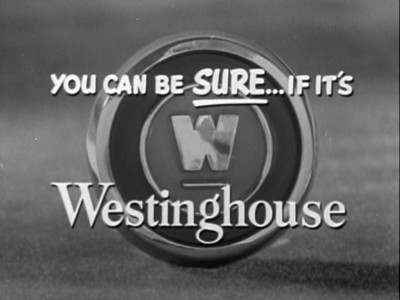
Here are the 17 plays that comprise the Studio One Anthology, followed by my brief comments about their productions:
DISC ONE
THE MEDIUM
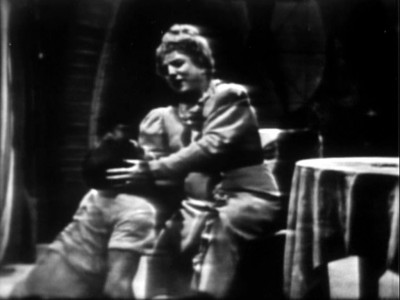
I know I'm a barbarian, opera lovers out there, so don't bother to write in and complain; I'm aware of my failings. But operas with English librettos have always struck me as...faintly ridiculous, and due to the absolutely dismal audio and visual quality of the kinescope here of this 1948 production, it's difficult for me to change my mind and embrace this format. Probably not the best selection chosen to start off this anthology, one might suspect, in a less-than-charitable mood, that offerings such as The Medium (and yes, I know it's considered a classic, and yes, I know I'm supposed to adore it) eventually drove the average TV viewer straight into the arms of the Cartwright boys on the Ponderosa. Considering this was only the third episode of Studio One, and that it was preserved on a kinescope, is miraculous, but the almost indecipherable visuals and the tinny audio negate quite a lot of the opera's intended impact.
JULIUS CAESAR
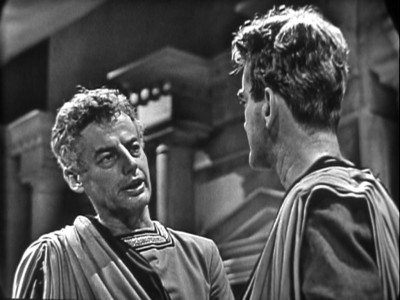
DISC TWO
JUNE MOON
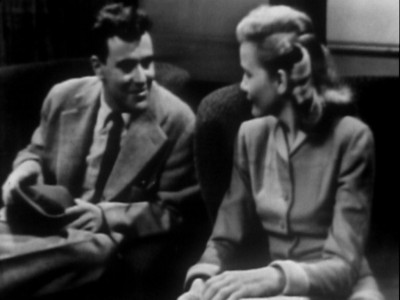
Delightful despite the technical limitations of the actual shoot (the cheapness of these productions is readily apparent in this early 1949 effort, complete with cramped sets and painted canvas backdrops), June Moon features an early performance by Jack Lemmon that points the way towards his big-screen persona that the world would become familiar with within ten years. He's matched by the sweet, enchanting Eva Marie Saint, and by old pros Andrews and particularly Farrell, who's amazing as the sardonic Lucille. Familiar character actor Joshua Shelley as pianist Maxie has the best one-liners; he's a delight, as well. Fast-paced and still quite funny (and unexpectedly moving).
WUTHERING HEIGHTS
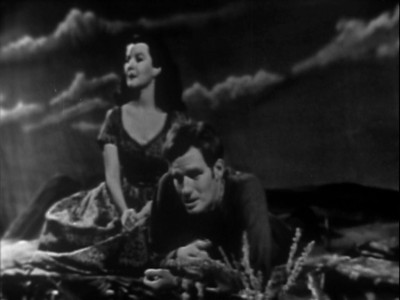
PONTIUS PILATE
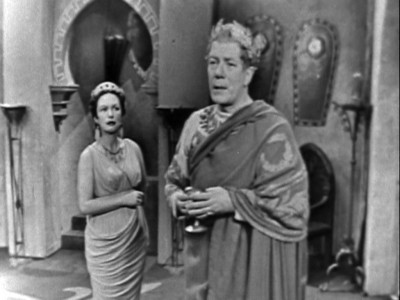
With a remarkably mobile camera, director Franklin Schaffner moves about the small set with ease, greatly adding to the effect of the ping-ponging, distinctly British byplay between Ritchard and Fitzgerald (Schaffner orchestrates a rather stunning moment where a blinding white light and an eery, high-pitched sound accompany Procula's ultimate fate). Beautifully witty and ultimately quite powerful, Pontius Pilate is one of the best offerings on the Studio One anthology, showcasing the marvelous performances by Richard and Fitzgerald, while highlighting Dyne's central meditation on redemption.
DISC THREE
THE STORM
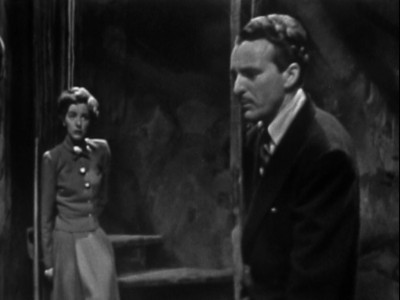
Directed by Yul Brynner, from an adaptation by Worthington Miner of the McKnight Malmar short story, The Storm is one of the least effective plays offered on this collection, not only because the "mystery" is so familiar and easily figured out, but also because the direction by Brynner is so obvious and cliched, with big looming close-ups utilized any time a suspenseful moment arrives, telegraphing the action. This wasn't the first time this particular story was dramatized on Studio One, proving that not all was golden during the "golden age" of live network drama.
1984
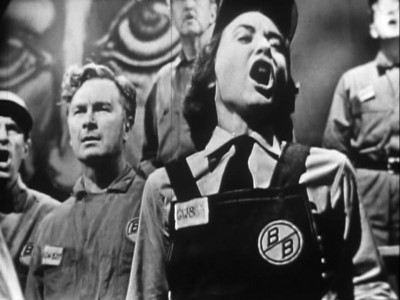
CONFESSIONS OF A NERVOUS MAN
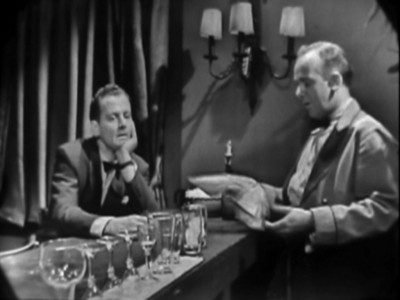
DISC FOUR
THE REMARKABLE INCIDENT AT CARSON CORNERS
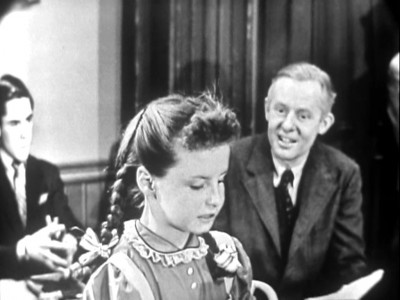
What starts off as an intriguing little chiller that might belong on The Twilight Zone, quickly devolves into cheap, easy moralizing about the responsibilities of a community to watch out for one another, lest some small child dies accidentally. Written specifically for Studio One by Reginald Rose, and directed by Paul Nickell, The Remarkable Incident at Carson Corners ultimately becomes the worst kind of preachy, feel-good liberal self-castigation about fuzzy social ills (the dead boy's father's speech at the end makes little sense in his plea that everyone "must do better" at "living for each other") that unfortunately marked quite a few of these later live dramatic anthology entries.
DARK POSSESSION
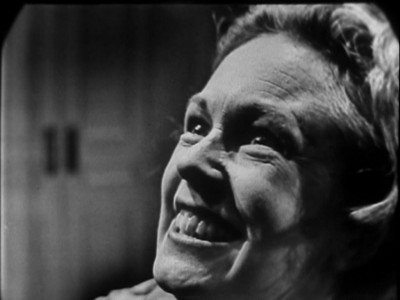
Gore Vidal's first play, 1954's Dark Possession, was a timely excursion into the growing public interest and acknowledgment of multiple personality disorder (Shirley Jackson had written a novel about that subject the same year, and the Bridey Murphy sensation a few years prior, although tied to reincarnation and hypnotic regression, certainly set the stage for the public's acceptance of the disorder). Again, as with Pontius Pilate, Fitzgerald proves herself to be a fierce, spellbinding actress here (her close-ups, when she's "Janet," are terrifying), a performance aided no doubt by Vidal's delicate, intricately structured dialogue. Nielsen is stalwart (as he always during his earlier career as a straight dramatic lead), while Bramwell Fletcher as infirmed Governor Bell, acts the hell out of that wheelchair. A clean, deceptively simple thriller, brought off with Vidal's usual taste and panache.
THE DEATH AND LIFE OF LARRY BENSON
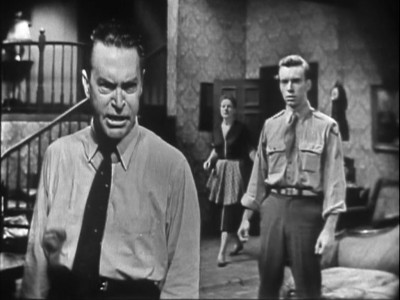
A quiet, gentle fantasy, sensitively realized by Reginald Rose's script and Paul Nickell's direction, The Death and Life of Larry Benson is a strange little tale, full of regret and longing, that seems quintessentially "American" in its examination of father/son relationships. While one might question the ultimate acceptance of "Larry" by the family, the actors make this surprising twist believable, particularly Homeier's nicely calibrated turn as the lost soldier, as well as Chester Morris' pitch-perfect characterization of the bewildered, defiant, ultimately sympathetic father. A most unusual little drama, one that beautifully realizes the potential of live dramatic television.
DISC FIVE
THE STRIKE
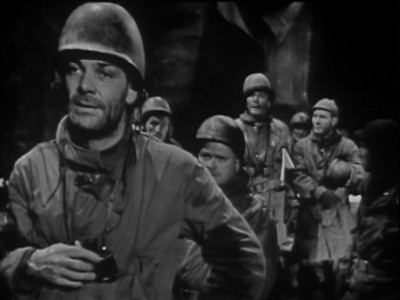
A perfect example of writer Rod Serling's often torturous, un-solvable moral quandaries found in his best work, The Strike is a compelling war story, certainly not original in its central premise, but glacially smooth and clean and hard in its exposition. James Daly, an underutilized actor who later gained fame on TV's Medical Center, strikes just the right note as the commander who fears he can't command anymore, and who may not be able anymore to make the difficult decisions that are his and his alone to make. The cramped, grungy production design of the play suits the material perfectly here. Engrossing.
TWELVE ANGRY MEN
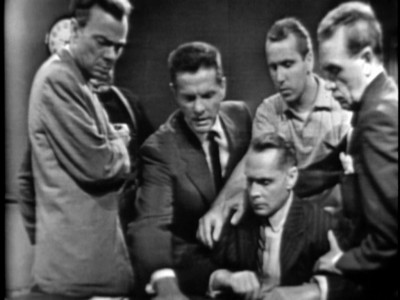
AN ALMANAC OF LIBERTY
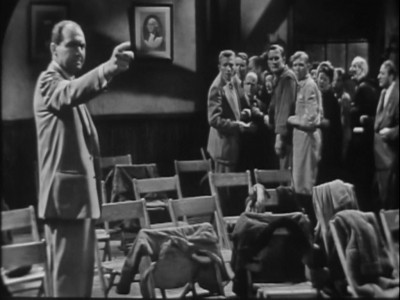
A painfully obvious exercise in political indignation, An Almanac of Liberty certainly has an important message to convey, a message that each succeeding generation needs to painfully re-learn - freedom requires personal, individual diligence or collectively, we lose it - but Reginald Rose's tendency to preach and to be obvious about his worthwhile messages comes to the fore here in this plaintive exercise in fantasy. Symbolic to the point of being cartoonish, An Almanac screams,"Listen to me! I'm good for you! You need a lesson in this!" an annoying trait of these socially relevant dramas from 1950s live television that frequently assumed that the average television viewer needed constant reminders on what it meant to be a good American (accompanied by an unwanted, smug, self-satisfied tone to the proceedings). One of the least effective offerings here in the Studio One anthology.
DISC SIX
SUMMER PAVILION
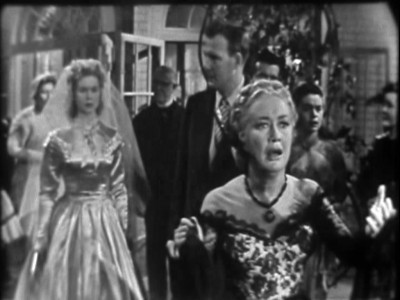
Gore Vidal described this deliciously written Southern Gothic as "very much [of the] school of Tennessee Williams," and indeed, it plays very much like The Cherry Orchard by way of A Streetcar Named Desire. Vidal, brilliant as always with his teasing dialogue, perfectly captures the desperate flailings of a faded Southern beauty who laments the passing of her nostalgic past, while equally nailing the realistic, tough-minded, modern daughter who recognizes that the past must be let go, or rot will set in permanently. The cast is perfection, particularly Miriam Hopkins (whose performance here should rank with the best big-and-small screen depictions of complicated Southern belles), while young Elizabeth Montgomery (appearing here on Studio One, her father Robert's main competition on Monday nights) again shows what an underutilized actress she was; far more talented and skilled than her delightful turn on Bewitched indicated. Certainly one of the best offerings on this anthology.
DINO
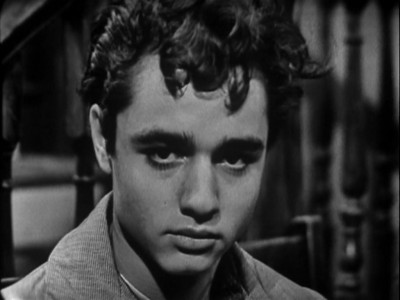
Another "message" play from Reginald Rose, Dino is familiar enough dramatic fare, totally dependent on whether or not the viewer believes such easy Freudian fixes solve complex social ills, and that there really are "no bad boys" ("No" to both those propositions for this reviewer). While Mineo and Meeker are certainly accomplished here, your appreciation of the play's resolution will necessarily depend on whether you buy Rose's central premise. Director Paul Nickell does manage to maintain an exciting pace here, though, with the Larry Eggleton's sets aiding the atmosphere quite well.
THE ARENA
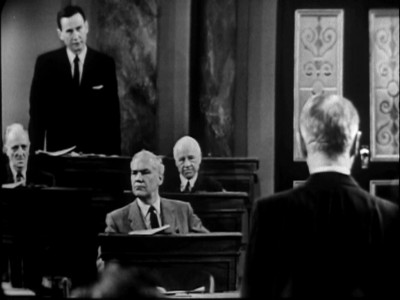
Playing very much like a cross between Advise and Consent and Vidal's The Best Man (both of which came out after this teleplay), Rod Serling's The Arena is a mesmerizing exploration of political machinations and the implications of personal ambitions - and prejudices - within the complex sphere of interdependent Washington politics. Today's extremists on both sides of the political spectrum won't much like Serling's moral of the story - keep your mouth shut if you want to get along within one of the most exclusive clubs in the world - but I would imagine most of us understand this kind of back-and-forth threats, goes on all the time within the Beltway. Structured like a thriller, The Arena is probably the most exciting offering here on the Studio One anthology, and features yet another accomplished performance by Chester Morris as the wise, cynical Feeney. Corey, a terrific supporting actor in feature films (I love his cold, blank eyes), straddles his character's impulse to destroy versus his desire to righteously defend his father's memory (which winds up being not deserving of such a defense) quite well. Efficiently and quickly directed by Studio One regular, Franklin Schaffner - who fittingly went on to direct the very similar feature film version of Vidal's The Best Man.
The DVD:
The Video:
Anyone looking for digital clarity along the lines of the worst possible old VHS tapes, will still be disappointed in the full screen, 1.33:1 transfers here for Studio One Anthology. But understanding that these shows came from poorly stored 16mm kinescopes can help you accept the limited video and audio fidelity. I have seen better "boosted" kinescope releases (computer-aided restorations), such as the Elvis/Ed Sullivan kinescopes from a few years back, but according to the information on the Studio One Anthology box, these kinescopes have been restored to their optimal quality, so....
The Audio:
The English mono audio tracks certainly represent the original broadcast presentations of these plays, but differences in the relatively primitive recording techniques from that time result in quite a few tracks here that have a significant amount of hiss and crackle. Again, anyone watching this with an eye towards visual and audio perfection is missing the essential point of these recovered kinescopes. English subtitles are available for all of the plays.
The Extras:
In addition to the above mentioned booklet (which is small but quite glossy, with complete crew and cast credits), all of the original Betty Furness commercials that aired during these episodes are included - and they're wonderful (the funniest one has to be during The Arena, when Furness, showing how "backward" other countries are in comparison to American laundry washing techniques, shows an obvious Russian peasant woman - who helpfully says, "Da!" - beating her clothes on a rock!). On disc one, there's a Paley Center Panel Discussion, from 11/17/87, which features excerpts from a seminar on Studio One. Guests include Loring Mandel (who moderates), Tad Mosel, Lela Swift (who has a really ax to grind with all those "average" TV viewers out there that "ruined the purity" of live drama), Betty Furness, Betty Stein-Chicon, Chris Schultz, and Willard Levitas. It runs 77 minutes, and contains a lot of information on how these shows were actually produced (as well as a lot of questionable conclusions about the interaction between sponsors, networks and the "base of the average citizen" who evidently brought down live dramatic television). On disc two, there's a Studio One Historical Overview, an undated featurette running 10:18 that features interviews with Charlton Heston, John Frankenheimer, Jack Klugman, and Cloris Leachman discussing their roles in live dramatic television. Heston is honest enough to admit he really was green as an actor back then, and Klugman admits that he was all wrong for his Studio One appearance (he played a cowboy), while Frankenheimer, as usual, is all wet with his fuzzy denouncement of the network powers-that-be. On disc three, Paul Nickell Interview Excerpts features a Paley Center interview, conducted in 1987, where Loring Mandel discusses Nickell's role in Studio One. It runs 11:00, but it contains some holes in its information (everyone discusses the switch between producers Worthington Miner to Felix Jackson as if it's already old news and that we don't need any background on the switch). And on disc four, Voices From the Archive: Studio One, features interviews with William Shatner (who's hilarious and entertaining, as always), Mike Wallace, John Forsythe, E. G. Marshall, Mitch Miller, Sidney Lumet, Tad Mosel, Jack Lemmon, Bob Markell, James Wall, Jayne Meadows, Hume Cronyn, and Alan Young, discussing the merits of early live dramatic anthologies. It runs 19:33, and it's the best of the lot here.
Final Thoughts:
The Studio One Anthology is must viewing for anyone interested in the roots of American network TV, as well as the development of American drama in general during the late 1940s to the late 1950s. 17 plays are presented here, in various quality kinescopes, bringing to the viewer a lost moment in television history that was alive with daring experimentation. Not everything works here in the anthology, but enough does to make the Studio One Anthology highly recommended viewing.
Paul Mavis is an internationally published film and television historian, a member of the Online Film Critics Society, and the author of The Espionage Filmography.


|
| Popular Reviews |
| Sponsored Links |
|
|
| Sponsored Links |
|
|
| Release List | Reviews | Shop | Newsletter | Forum | DVD Giveaways | Blu-Ray | Advertise |
|
Copyright 2024 DVDTalk.com All Rights Reserved. Legal Info, Privacy Policy, Terms of Use,
Manage Preferences,
Your Privacy Choices | |||||||









